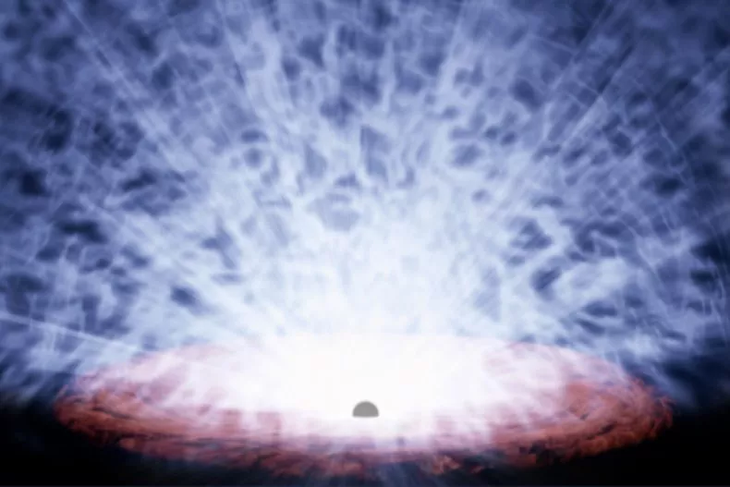
Supermassive black holes are "cosmic monsters" with masses ranging from millions to billions of times that of the Sun. With extremely strong gravity, they swallow everything around them, including light - Photo: JAXA
According to Nature, this strange black hole is PDS 456, an active galactic nucleus (AGN) in the constellation Serpens.
The international team of scientists from the XRISM Spectroscopy Project used the modern XRISM instrument and recorded super-fast gas streams released from the center of the black hole at a speed of 20-30% of the speed of light, equivalent to about 60,000 - 90,000 km/second.
Remarkably, the energy carried by these gas streams is 1,000 times higher than that of normal galactic winds, and this could completely change the way we understand the relationship between black holes and galaxies.
Supermassive black holes are cosmic monsters with masses ranging from millions to billions of times that of the Sun. With extremely strong gravitational forces, they swallow everything around them, including light.
Scientists have long suspected that every galaxy has a supermassive black hole at its center. Black holes grow and evolve with galaxies. But the specific mechanism remains a mystery.
One of the keys believed to be most important in deciphering this relationship is cosmic winds, the streams of gas and energy that are "blown" out into space by black holes.
Researchers believe that these winds have two major roles: restraining the growth of black holes by slowing the flow of matter being sucked in, and transferring enormous energy into the galaxy, which can inhibit the formation of new stars.
Using XRISM, the team discovered that the wind from PDS 456 is not a homogeneous mass but is divided into five separate components, each with a different speed.
This leads scientists to believe that either the black hole is "spewing" gas in bursts, like a periodic volcanic eruption; or the gas is flowing through "gaps" in the interstellar medium, not the uniform and symmetrical outflow of gas as previous models suggest.
"These data make traditional theories of outflow, whether kinetic or momentum-based, no longer suitable. A completely new model is needed to explain this phenomenon," the team of scientists shared in a report published in Nature .
The discovery of "gas bullets" from the black hole PDS 456 is not only an astronomical breakthrough, but could also be an important clue in deciphering how galaxies and black holes co-evolve.
The vast universe never ceases to amaze us. And with each step forward in science, we learn more about the wondrous complexity of space, where countless mysteries remain to be discovered .
Source: https://tuoitre.vn/chua-tung-thay-trong-lich-su-thien-van-ho-den-sieu-khoi-ban-ra-dan-khi-20250518133407165.htm


































































































Comment (0)